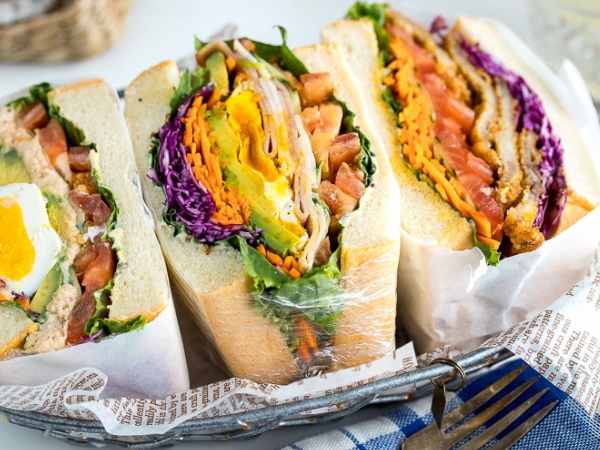We Tried Making Japanese Aesthetic Sandwiches 2023
Have you ever scrolled through your Instagram feed and stumbled upon a perfectly crafted sandwich that looks almost too good to eat? Well, chances are you were looking at Japanese Aesthetic Sandwiches! These sandwiches have taken social media by storm with their beautiful, intricate designs. But what makes them so special? In this blog post, we decided to try our hand at making these stunning sandwiches and share our experience with you. So grab some bread and let’s get started on this journey of creating Japanese Aesthetic Sandwiches!
What is Japanese Aesthetic?
Japanese Aesthetic is a term that refers to the beauty and artistry of Japanese culture. It encompasses many different aspects such as pottery, textiles, floral arrangements, and even food presentation. In recent years, it has become particularly popular on social media with people sharing pictures of their beautifully crafted Japanese-inspired dishes.
One aspect of Japanese aesthetics that stands out is its attention to detail. Every element in a dish or design serves a purpose and contributes to the overall composition. This can be seen in the intricate designs of Japanese Aesthetic Sandwiches where each ingredient is carefully placed to create a visually stunning result.
Another key feature of Japanese aesthetics is its minimalism. Rather than overcrowding a dish with too many elements, simplicity is often favored allowing for an appreciation of individual ingredients and textures.
There’s something truly captivating about the way Japanese culture incorporates aesthetics into all aspects of life – including food!
Also Raed – The Kendall Jenner Met Gala 2023: A Fashion Extravaganza

Ingredients for Japanese Aesthetic Sandwiches
When it comes to Japanese Aesthetic sandwiches, the ingredients are just as important as the presentation. Traditional Japanese cuisine emphasizes fresh and seasonal ingredients that offer a unique balance of flavors and textures.
For these sandwiches, you will need high-quality bread such as shokupan or milk bread which is soft yet sturdy enough to hold fillings without falling apart. For the filling, try using thinly sliced cucumbers, radishes, carrots, avocado slices, or bean sprouts for a healthy crunch.
Another essential ingredient is kewpie mayo- a creamy mayonnaise made with rice vinegar that adds a tangy flavor to your sandwich. You can also add protein elements like cooked chicken breast or tofu marinated in soy sauce.
To elevate your sandwich’s flavor profile further, consider adding seasoning like wasabi paste mixed with soy sauce or furikake (a mix of seaweed flakes and sesame seeds). Don’t forget about umami-rich condiments like miso paste or teriyaki sauce which take your sandwich from good to great!
When selecting ingredients for Japanese aesthetic sandwiches remember quality over quantity and always pay attention to details including colors and textures so that each bite is visually appealing and delicious!
How to Make Japanese Aesthetic Sandwiches
Japanese Aesthetic Sandwiches are not only visually attractive but also incredibly delicious. To make these sandwiches, you will need a few ingredients and some creativity.
Firstly, choose your bread wisely. Soft white bread or toasted milk bread works well for this type of sandwich. Then, select fillings that have a vibrant color such as pink smoked salmon or bright green lettuce.
Next, cut off the crusts to create a clean and neat appearance – this is an essential aspect of Japanese Aesthetic cuisine. Use cookie cutters to shape the bread into unique forms like hearts or stars.
Layer the fillings in between the shaped slices of bread and secure them with toothpicks if needed.
It’s time to add some decorative touches. Use edible flowers like pansies or violets to embellish the sandwich top; they’ll contribute an extra pop of color that will enhance its aesthetic appeal further.
Once you’ve completed all steps mentioned above, take a moment to admire your masterpiece before enjoying every bite!
We Tried Making Japanese Aesthetic Sandwiches 2023https://t.co/dMbincMLSo pic.twitter.com/pKoZ5bqs4o
— Pricebala (@Pricebala_) May 4, 2023
The Results
After following the steps to make Japanese Aesthetic Sandwiches, we were excited to see how they turned out. The results were surprisingly impressive! We were able to create sandwiches that looked like works of art and tasted delicious.
Each sandwich had a different design, with various colors and shapes. Some had intricate patterns made from layers of vegetables and meats, while others featured simple yet elegant arrangements of ingredients. We found that using a sharp knife for precise cuts was essential in achieving the desired look.
The flavors in each sandwich worked harmoniously together, creating a perfect balance between savory and sweet. The use of fresh ingredients such as avocado, cucumber, and smoked salmon added depth to the overall taste.
One thing we noticed was that patience is key when making these sandwiches. It took time to carefully arrange the ingredients into visually pleasing designs. However, it was worth it when we saw the end result.
Making Japanese Aesthetic Sandwiches was an enjoyable experience that resulted in beautiful and tasty creations. With practice and creativity, anyone can master this unique culinary art form!
Conclusion
After trying our hand at making Japanese aesthetic sandwiches, we can confidently say that not only do they look beautiful, but they taste delicious as well. The combination of fresh ingredients and thoughtful presentation truly elevates the sandwich into a work of art.
While it may take some practice to perfect the art of making these sandwiches, it’s worth the effort for anyone looking to add some beauty and creativity to their meals. Plus, they’re sure to impress any guests or Instagram followers!
We highly recommend giving Japanese aesthetic sandwiches a try. Not only will you be creating something visually stunning, but you’ll also get to enjoy a tasty meal in the process. Happy sandwich-making!




